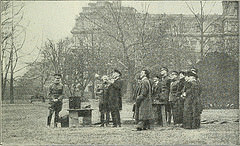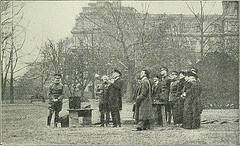Free Homeschooling Physics Experiments You Can Do With Your Kids

In an animated series, the characters and objects are capable of moving at high speeds and stopping abruptly in their tracks. In real life this is not possible, because everything on earth follows certain laws of motion. Free homeschooling can teach you how to use objects of daily use to learn the laws of motion. Today we will learn why a ping pong ball behaves the way it does, and I will also teach you how to build a cool accelerometer.
Animation is fun, but we also need to know objects behave in reality. I am personally no longer confused about why certain objects in motion behave in a particular way. Therefore I want you to know it too. As I create the curriculum for free homeschooling and other programs, I always make it a point to include some cool activities that will teach you about how moving objects behave.
Lessons from a Ping Pong ball
Place a ping pong ball on a ping pong table. You will notice that it remains stationary. Now hit it gently with a ping pong bat. It will move. Once it hits the net, it will stop.
Why does the ball behave in this way? Let me use the Laws of Motion framed by an Italian scientist, Isaac Newton, to explain why this happens. The first law of motion tells us that any object that is at rest or in motion, will continue in that state till an external force acts on it. The stationary ping pong ball will continue to remain in the state of rest unless some external force such as a breeze or a bat hits it. Once it gets rolling, it will have the tendency to continue in the state of motion unless an external force such as friction with the table or the net stops it.
This is a very simple free homeschooling idea that uses a humble ping pong ball to give you the foundation for learning Physics.
Let’s do another experiment with a ping pong ball…
Glue the bottom of a transparent plastic cup to the end of a dowel of about an arm’s length. You should be able to hold a ping pong ball in it just like you hold a marble in a spoon. Now insert the ping pong ball in the cup and hold the free end. Start moving in a circle with the mouth of the cup facing forward. Does the ping pong ball fall?
Now suddenly stop moving! The ping pong ball pops out of the cup in a direction that is tangential to its circular path. Why does the ball not stay in the cup?
Answer: This is because, according to the first law of motion, the ball continues in its state of motion in a straight line even after the cup stops. After a while, it falls to the ground due to the downward force of gravity.
Why then did the ball not pop out when you were moving the cup in circles? The ball always wanted to move in a straight line, but it was obstructed by the side of the cup and made to change its direction (The same reason why your body hits the side of your car during sharp turns).
Another thing you must have noticed about motion is that when you are travelling in a car, you tend to move forwards and backwards whenever the car frequently changes its speed. In other words, you can say that your car is accelerating.
If your car was moving with a constant speed in the same direction, you would be able to stand on its roof and not fall off. The very reason you need a seatbelt your car is to prevent you from getting hurt when the car undergoes huge acceleration.
So, acceleration is the rate at which the speed (velocity, to be precise) of an object changes in a particular direction. Acceleration is another daily life topic that can be taught during free homeschooling sessions.
Homemade Accelerometer: Your accelerometer is an inverted soda bottle filled with water (no bubbles), with a wine cork floating halfway in the bottle. The wine cork is attached to the inside of the bottle cap by a string (hot-glued at both ends). Construct it yourself!
When you travel in your car the next time, hold this homemade accelerometer in your hand and watch the wind cork move to and fro, showing you that your car is accelerating.
Check out the free “Homeschool Parent’s Guide to Teaching Science”, for great science experiments and activities, click the link below.
A great free resource for really cool science experiments and activities is the Homeschool Science Experiment Guide.
Another good homeschool resource for science ideas, experiments and activities, is the homeschool science blog. Definitely worth bookmarking.
